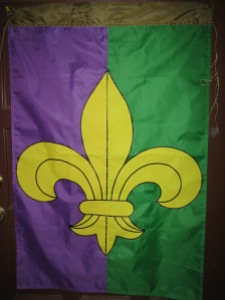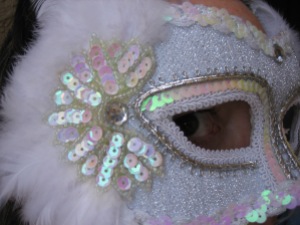 It was Lundi Gras, the day before Mardi Gras, and the entire city was in party mode. It was the perfect time for kissing a stranger in the French Quarter and bringing a stranger home to share my bed.
It was Lundi Gras, the day before Mardi Gras, and the entire city was in party mode. It was the perfect time for kissing a stranger in the French Quarter and bringing a stranger home to share my bed.
I was a student at a university in New Orleans, adrift in-between boyfriends. I’d recently freed myself from my controlling high school sweetheart who’d thwarted my plan to slowly drift apart when I went off to college by following me there. I was looking for love but settling for sex in those party days of my early 20s.
I’d gotten a temporary job for the Mardi Gras season through a friend of a friend. The t-shirt shop where I worked was tucked into a quiet corner of the Quarter and was only open during daylight hours. After closing up shop, the woman I was working with and I met our mutual friend and took our party to the streets.
Our first stop was the convenience store where cans of cheap beer floated in a tall cooler filled with slushy ice. The beer was nasty, but the price was right for working-class collage students at only a dollar for not just one but two cans. I downed one of my beers quickly, while it was still icy cold. I enjoyed the way the alchohol went straight to my head.
Where all did we walk that night? I have a hazy memory of the fountain at the Riverwalk and crowds of people packed in to listen to Dr. John play. It was too much for us, or maybe we didn’t see anyone we knew, but for whatever reason, we wandered back to the Quarter.
I think I met the DJ on Jackson Square. We met in some quiet place, because I was able to hear him when he spoke. He was a DJ at a local radio station. Although his radio name was the same as a classic rock legend, the DJ worked at a country music station. At some point during our conversation, he leaned over and kissed me. It was a rather chaste kiss, but it made my head spin as much as the beer had. He liked me! He was an older man (maybe even 30!), an adult with a real job, and he liked me! Usually my friends got all the guys, but this grown-ass man liked me.
My friends quickly got bored and urged me to come on! There was to be more from this night than me getting kissed. There was bound to be more exitement around the next corner.
I said good-bye to this exciting man who I expected to change my life.
Call me at the radio station, he said to me and told me the hours he worked. I was too naive to know that a man who really liked me would scribble his home phone number on a scrap of paper and press it into my hand.
We hadn’t gone far before we ran into the two boys* from Chicago in town from Mardi Gras. My friend had met them somewhere (a bar probably) a night or two before and befriended them. They were maybe even crashing on my friend’s floor. My memory is fuzzy after all these years. They were dressed like they’d come from the video for a song by the Black Crows–all patched pants and nouveau hippie.
The one guy had dark hair. He was nice enough, but I don’t remember his name or much about him. His friend, however, was lovely. His name was Michael and he looked like a nouveau hippie angel. His blondish hair was longish and curly, but he looked more like a cherub than a Greek god. He was good-looking, but attainable.
The five of us hung out the rest of the night, walking the streets of the Quarter. At some point I’d drunk my second 50 cent beer, but I don’t think I’d had any more alcohol than that. I was tipsy but not sloppy, and I was having a great time.
The more I hung out Michael, the more I liked him, and the more I liked him, the more I wanted him in a carnal way. Emboldened by the alcohol and the earlier kiss from a stranger (which proved I was desirable), I decided I was going to ask this young man to come home (and by home, I mean dorm) with me.
I waited until we were stopped on the sidewalk so my friends could talk to someone they knew and I didn’t. Michael’s friend had wandered out of earshot, and the two of us were standing there a little awkwardly, two wallflowers at the world’s biggest party.
I turned to him and smiled. Would you think I was a terrible person if I asked you to come home with me?
He grinned at me, said, I wouldn’t think that at all, and hugged me.
Michael and I spent the rest of the evening out grinning at each other. We knew what was going to happen next, even if our friends were still clueless.
I don’t remember how we got back to my dorm, but I remember us going to my room where my roommate thankfully was not. We had friendy sex, them grabbed a few hours of sleep next to each other in my single bed. In the morning, I walked him downstairs and watched him leave through the big glass doors at the front of the building.
I never saw or heard from Michael again, but I’ll never forget the Lundi Gras when I was kissed by a stranger and slept with an angel.
* by “boys” I mean two young men old enough to consent
Photo courtesy of The Library of Congress

